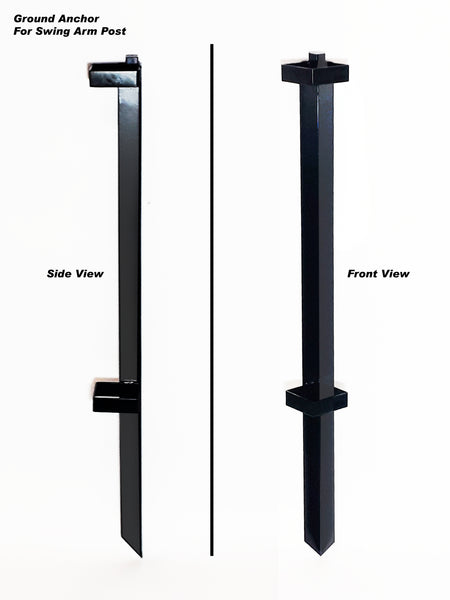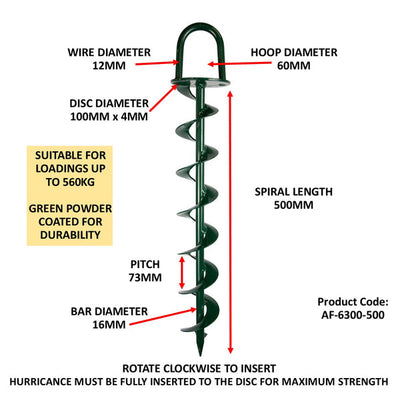Essential Aspects Before Getting a Heavy-Duty Ground Anchor
Essential Aspects Before Getting a Heavy-Duty Ground Anchor
Blog Article
Discover the Different Kinds Of Ground Anchor for Your Next Task
When starting a building and construction or landscape design project, understanding the different sorts of ground anchors available is vital to guaranteeing both security and durability (Ground Anchor). From auger supports, which master varied dirt conditions, to risk supports created for momentary setups, the alternatives are countless. In addition, concrete and screw anchors existing one-of-a-kind benefits in details scenarios, while deadman supports are customized for applications calling for resistance to side pressures. The option of an appropriate anchor kind can dramatically influence the total success of your task, prompting additional exploration into their particular benefits and applications.

Auger Anchors
Auger anchors are a prominent selection in different building and construction and landscape design jobs due to their special layout and efficient anchoring capacities. These anchors contain a helical screw-like shaft that is driven right into the ground, permitting a stable and secure hold. The spiral layout assists in easy installation and makes best use of resistance against side forces, making auger supports especially efficient in applications such as secure fencing, temporary structures, and disintegration control.
The setup procedure of auger anchors is fairly uncomplicated. They can be manually or mechanically mounted, depending upon the dimension and called for depth. This flexibility permits their use in diverse dirt conditions, from sandy to clayey surfaces. Auger anchors can be conveniently removed and reused, which adds to their cost-effectiveness and sustainability.
One of the significant advantages of auger supports is their ability to distribute loads evenly throughout the bordering soil, reducing the threat of soil disturbance and minimizing environmental effect. Additionally, they are much less susceptible to heaving or loosening with time compared to traditional anchoring techniques. As a result, auger anchors are an outstanding selection for jobs requiring durable and trustworthy anchoring solutions.

Stake Anchors
When it pertains to safeguarding structures in a selection of outside applications, stake anchors use a straightforward and trusted option. These supports are normally built from long lasting materials such as steel or aluminum, designed to stand up to ecological stress and anxieties while providing optimal stability. Their easy style permits quick installment, making them an optimal option for long-term or temporary anchoring needs.
Stake supports are especially beneficial in protecting tents, canopies, and other lightweight frameworks versus wind and climate. They operate by being driven into the ground at an angle, creating a solid hold that resists pull-out forces - Ground Anchor. The performance of stake supports depends on numerous aspects, consisting of soil kind, wetness web content, and the angle of setup
For included security, several stake anchors feature accessory points for ropes or bands, allowing for tension changes as needed. In applications such as landscape design or construction, they can efficiently maintain tools or frameworks on unequal terrain. Overall, stake anchors supply a cost-effective and flexible service for protecting different exterior setups, making them a recommended choice for specialists and DIY enthusiasts alike.
Concrete Anchors
Concrete anchors offer a durable option for safeguarding frameworks to concrete surface areas, ensuring security and safety and security in different applications. These anchors are necessary for jobs ranging from household constructions to large-scale commercial setups. They come in different kinds, including growth supports, adhesive anchors, and undercut anchors, each developed for specific lots requirements and ecological conditions.
When installed,Development supports rely on mechanical devices to hold the concrete. They are perfect for tool to durable applications. Adhesive supports use high-strength epoxy or resin to bond the support to the concrete, offering superior load-bearing abilities, especially in broken concrete situations. Undercut supports produce a special form within the concrete, offering remarkable holding power, particularly in applications where tensile tons prevail.
When carried out properly, concrete anchors substantially enhance the architectural integrity of various projects, making them important in contemporary building and construction practices. Understanding the particular demands of your task will certainly aid in selecting the ideal kind of concrete support for the job.
Screw Anchors

Screw anchors are a functional attaching option that can be properly utilized in a range of applications where typical concrete anchors might not be enough. These anchors consist of a helical style that enables them to be easily driven into the ground, making them optimal for usage in soil and various other substratums. Their distinct structure offers exceptional holding power and resistance to pull-out forces, making them suitable for numerous tasks, from landscape design to structural support.
One of the main advantages of screw anchors is their ease of setup. They visit here require very little tools and can often be mounted without the need for excavation, which conserves both time and labor costs. Additionally, screw supports can be gotten rid of and recycled, using a sustainable remedy for short-term applications.
Screw anchors are specifically useful in areas where dirt problems are challenging, such as loosened or sandy dirts. Their ability to be set up at differing depths enables for customization based upon specific job demands. Generally, screw supports provide a efficient and trustworthy securing technique, making them an exceptional selection for contractors and engineers looking for effective remedies for their jobs.
Deadman Anchors
Deadman supports work as a robust solution for stabilizing frameworks in difficult conditions, particularly where standard anchoring methods might fall brief. These anchors contain big, hefty things hidden underground, which create resistance versus side pressures. The design normally involves a straight element, such as a block of concrete or a steel plate, buried in the dirt, to which straps or cables are connected.
The efficiency of deadman supports hinges on their ability to disperse tons over a bigger location, lowering the danger of failure in unpredictable dirt conditions. They are specifically valuable in applications such as maintaining walls, short-lived structures, and incline stablizing, where soil motion can compromise the stability of the structure.
Installment of deadman supports requires careful planning to guarantee they are put at the appropriate deepness and positioning, optimizing their load-bearing ability. While they might call for more labor and product than light-weight supports, their integrity in unfavorable problems makes them very useful for long-term projects. Deadman anchors are versatile and can be adjusted to numerous applications, making them a go-to option for engineers encountering unique challenges in their tasks.
Verdict
Auger supports Visit Website succeed in varied soil problems, while stake anchors fit momentary applications. For concrete surfaces, growth and sticky supports offer reputable options, and screw supports supply adaptability in tough terrains.
In addition, concrete and screw supports existing unique advantages in specific situations, while deadman supports are tailored for applications requiring resistance to lateral forces - Ground Anchor.Auger supports more info here are a prominent selection in different construction and landscape design jobs due to their one-of-a-kind style and effective anchoring abilities. They come in different types, including growth supports, sticky anchors, and undercut supports, each developed for particular tons demands and environmental problems
Sticky anchors make use of high-strength epoxy or material to bond the anchor to the concrete, offering superior load-bearing capabilities, particularly in fractured concrete situations. On the whole, screw anchors give a reputable and effective anchoring approach, making them an exceptional choice for engineers and service providers looking for efficient services for their jobs.
Report this page